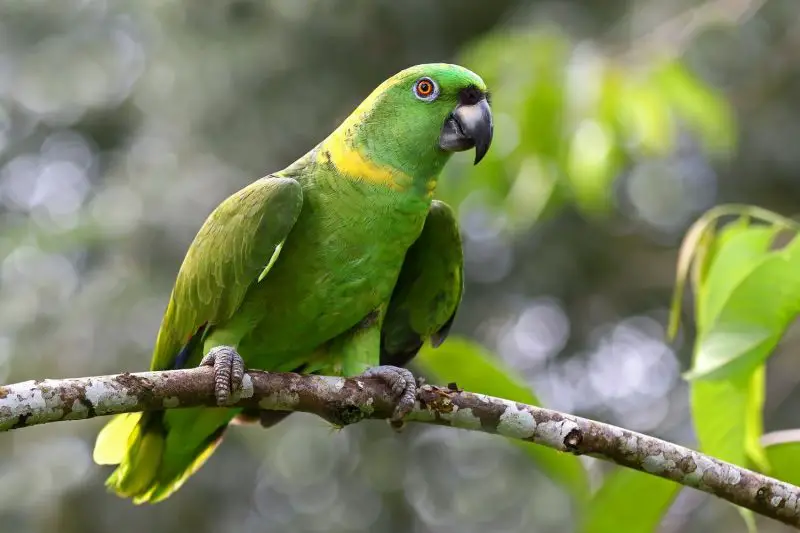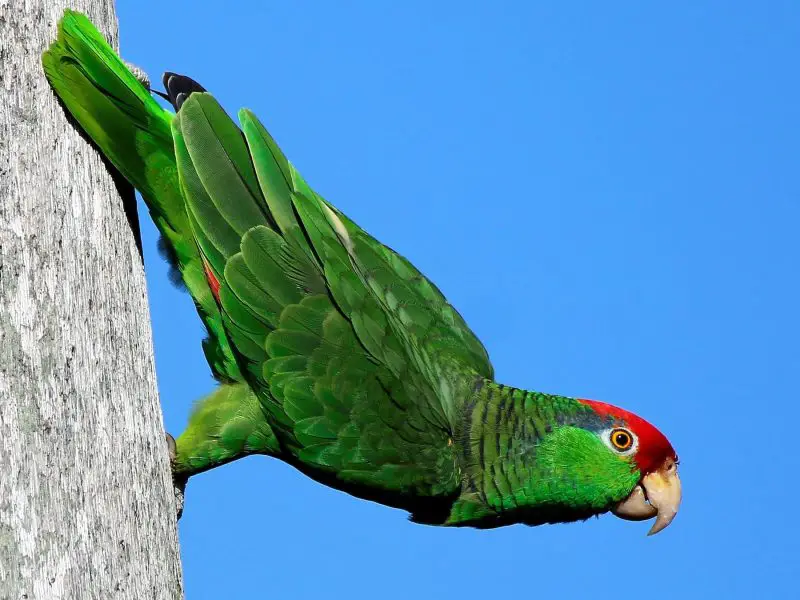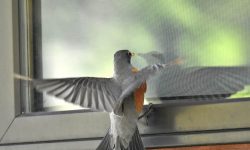The Green Amazon Parrot is one of the most captivating and intelligent bird species in the world. Native to the lush rainforests of Central and South America, these parrots are renowned for their striking green plumage, sharp intellect, and exuberant personalities. Known for their remarkable ability to mimic human speech and their social, playful behavior, Green Amazon Parrots make fascinating companions for those prepared to meet their complex needs.
In this article, we will explore the biology, behavior, habitat, and care of the Green Amazon Parrot. We will also delve into their unique traits, conservation status, and what it takes to responsibly own and care for one of these brilliant birds.

Species Overview
Scientific Classification
The Green Amazon Parrot is classified under the kingdom Animalia, phylum Chordata, class Aves, order Psittaciformes, family Psittacidae, and genus Amazona. Though often referred to collectively as the Green Amazon Parrot, this name encompasses several distinct species, all sharing a vibrant green plumage as their signature trait. Among the most commonly recognized are the Yellow-naped Amazon (Amazona auropalliata), known for the bold yellow patch on its neck and outstanding talking ability; the Blue-fronted Amazon (Amazona aestiva), distinguished by its blue forehead and sunny personality; and the Mealy Amazon (Amazona farinosa), the largest of the trio, noted for its softer coloring and mellow temperament.
Physical Characteristics
These parrots typically measure between 12 and 15 inches in length and can weigh anywhere from 400 to 700 grams, making them medium to large in the parrot world. Their feathers are a dazzling palette of green, often enhanced with bursts of yellow on the head, patches of blue around the face or wings, and flashes of red on the tail or underwings depending on the species. Their robust, curved beaks are not just striking in appearance—they’re finely tuned tools for cracking open hard-shelled nuts and manipulating objects with precision. Supporting their agile lifestyle are their zygodactyl feet, with two toes pointing forward and two backward, perfect for climbing, grasping, and performing astonishing acrobatics in both the canopy and the living room.
Natural Habitat and Distribution

Geographic Range
Green Amazon Parrots make their homes in the dense canopies of tropical and subtropical forests that stretch from Mexico through Central America and into the northern parts of South America. These vibrant birds thrive in warm, humid environments like rainforests, coastal mangroves, and savanna woodlands. Over time, some species have shown remarkable adaptability, adjusting to fragmented landscapes and even urban outskirts, where fruit trees and cultivated crops offer new foraging opportunities.
Environmental Role
In their native ecosystems, Green Amazon Parrots serve as critical agents of seed dispersal. As they feed on a wide variety of fruits, they help propagate countless plant species by excreting or dropping seeds across the forest floor. This natural behavior supports reforestation and enhances plant biodiversity. Their ecological contribution doesn’t stop there—they also form part of a larger food web, influencing insect populations and competing with other frugivores, which helps maintain balance within their habitat.
Intelligence and Communication
Cognitive Abilities
Green Amazon Parrots are widely regarded as some of the most intelligent avian species on Earth. Their brains contain highly developed regions dedicated to vocal learning, memory, and problem-solving—traits that have been the focus of various scientific studies. These parrots have demonstrated remarkable skills such as manipulating locks, identifying objects by color or shape, and even using tools in experimental settings. Their ability to solve puzzles, understand cause and effect, and respond to social cues puts them on par with the cognitive capabilities of great apes and young children.
Vocal Mimicry
The Green Amazon Parrot is perhaps best known for its extraordinary ability to mimic human speech and everyday sounds with impressive clarity and emotion. Unlike simple parroting, their mimicry reflects a keen sensitivity to tone, inflection, and context. Some individuals can learn hundreds of words and phrases, often imitating not just what is said but how it is said—complete with laughter, sneezes, or ringing phones. This advanced auditory memory and vocal flexibility allow them to participate in rudimentary conversations, making them prized companions among avian enthusiasts.
Social Behavior
In the wild, Green Amazon Parrots are rarely seen alone. They form tight-knit flocks that function as extended families, where communication is constant and complex. Through a mix of squawks, melodic whistles, clicks, and expressive body language, they coordinate movements, warn of predators, and reinforce social bonds. Mutual preening, synchronized flying, and communal roosting further reflect their highly social nature. This flock mentality persists in captivity, where the birds crave interaction with human caretakers or other parrots to stay mentally balanced and emotionally fulfilled.
Personality Traits
Playfulness
Green Amazon Parrots brim with curiosity and a love for play. Their inquisitive nature drives them to explore every inch of their surroundings, from dangling off perch ropes to sneaking under furniture. They relish engaging with a variety of toys—especially those that challenge their minds, like puzzle feeders or objects they can dismantle. These parrots frequently entertain themselves by hanging upside down, swaying to music, or even mimicking laughter while tossing small items with glee. Play is not just fun for them—it’s an essential outlet for their active minds and bodies.
Emotional Expression
Green Amazon Parrots are deeply emotional beings. They are capable of expressing a wide range of feelings through vocalizations, body language, and behavior. A content Amazon may sing softly, fluff its feathers, or gently nuzzle its favorite person. But the same bird can also become jealous or moody if it feels left out or overlooked. Their ability to bond is intense—many form strong attachments to specific individuals and crave attention and companionship. When emotionally deprived, they may vocalize excessively or display destructive behaviors, a sign of how profoundly they experience connection and loss.
Independence and Willfulness
Affectionate yet fiercely independent, Green Amazon Parrots often have strong opinions about what they want—and don’t want. They’re not shy about showing displeasure, whether it’s a squawk of protest or turning their back with a dramatic flair. This assertiveness, while sometimes challenging, is part of their charm. It means they can’t be coerced—they must be convinced. Training one of these parrots is as much about building trust and understanding as it is about teaching commands. Patience, consistency, and a relationship based on mutual respect are the keys to unlocking their cooperation and affection.
Diet and Nutrition
Natural Diet
In the wild, Green Amazon Parrots enjoy a diverse menu of fruits, seeds, berries, nuts, and leafy greens. Their natural foraging behavior keeps them mentally stimulated and physically active as they search treetops for ripening fruit or crack open tough seed pods with their powerful beaks. This diet not only satisfies their nutritional needs but also reinforces natural instincts that contribute to their overall well-being.
Captive Diet
When kept in captivity, their diet must mirror the diversity they’d find in the wild to support long-term health. A base of high-quality pellets ensures essential nutrients, while daily servings of fresh vegetables—like leafy greens, carrots, and bell peppers—and fruits such as apples, berries, or papaya provide variety and enrichment. Nuts and seeds, while loved, should be offered in moderation to avoid weight gain. Certain foods, including avocado, chocolate, caffeine, and alcohol, are highly toxic to parrots and must be strictly avoided. Clean, fresh water should be available at all times.
Housing and Environmental Enrichment
Space Requirements
Green Amazon Parrots need more than just a cage—they need a living environment that promotes exploration, exercise, and comfort. A cage should be as large as possible, ideally at least 36 x 24 x 48 inches, with horizontal bars for climbing and ample space for wing-stretching. However, even the largest cage is no substitute for daily out-of-cage time. These birds thrive when given room to fly, climb, and interact with their surroundings. Consider dedicating an entire bird-safe room or play gym area where your parrot can move freely under supervision.
Enrichment Strategies
Mental stimulation is essential for the emotional health of a Green Amazon Parrot. Their keen intelligence demands constant challenges. Offer a variety of toys—from chewable wood and shreddable paper to interactive puzzle feeders. Change toys frequently to prevent boredom. Incorporate natural branches, ropes, swings, and ladders to encourage physical movement. Foraging opportunities, such as hiding food in cardboard tubes or using foraging trays, allow the parrot to engage its instincts. Finally, nothing replaces social enrichment: these parrots flourish when spoken to, included in daily routines, or given time with other birds.
Training and Behavior Management
Positive Reinforcement
Training a Green Amazon Parrot is not just about commands—it’s about building a partnership based on trust and mutual respect. The most effective method is positive reinforcement, where desired behaviors are rewarded with treats, verbal praise, or affectionate interaction. When a parrot steps onto your hand, mimics a word, or performs a trick, reinforcing the action immediately with a favorite snack or cheerful tone teaches it that good things happen when it cooperates. Over time, these experiences strengthen your bond and help shape a well-behaved, confident bird.
Addressing Undesirable Behaviors
Like all intelligent animals, Green Amazon Parrots may develop undesirable habits such as screaming, biting, or becoming territorial—often as a reaction to boredom, frustration, or lack of stimulation. Instead of punishment, which can damage trust, the key lies in understanding the root cause. Observe what triggers the behavior—is it a particular time of day, a change in environment, or lack of attention? Once identified, use redirection, environmental changes, and rewarding alternative behaviors to reshape responses. For example, a bird that screams for attention might be ignored during outbursts but praised when it plays quietly. Consistency, patience, and a commitment to daily interaction are essential in promoting emotional balance and behavioral health.
Health and Lifespan
Common Health Issues
Green Amazon Parrots are capable of living for four to seven decades, a lifespan that rivals or exceeds that of many humans. However, this longevity depends entirely on consistent, high-quality care. Without proper nutrition and enrichment, they can suffer from a range of health problems. The most common include obesity, often caused by a high-fat seed diet and insufficient exercise; vitamin A deficiency, which affects the skin, feathers, and immune system; and respiratory infections, particularly in poorly ventilated or dusty environments. Other concerns include beak malocclusion, feather plucking, and fatty liver disease, all of which are preventable with the right husbandry. Regular visits to an avian veterinarian for checkups, blood work, and grooming are essential for catching issues early and maintaining optimal health.
Signs of Good Health
A healthy Green Amazon Parrot is easy to spot. Its eyes are clear and alert, its feathers sleek and glossy, and it engages in active, curious behaviors. A strong appetite and consistent, well-formed droppings are also good indicators. Any sudden changes—such as fluffed-up feathers, decreased vocalization, loss of balance, or refusal to eat—should be taken seriously, as birds often hide symptoms until they’re very ill. Careful daily observation by the owner is just as critical as veterinary care in ensuring a long, healthy life.
Conservation Status
Many species of Green Amazon Parrots are under threat due to habitat destruction and the illegal pet trade. While some populations remain stable, others—such as the Yellow-headed Amazon—are listed as endangered. Supporting ethical breeding programs and avoiding wild-caught birds helps conservation efforts.
The Green Amazon Parrot as a Pet
Owning a Green Amazon Parrot is a long-term commitment. Their intelligence, emotional depth, and social needs require dedicated care, time, and enrichment. They thrive in homes that can offer interaction, structure, and love—not just food and a cage. For the right person or family, they are incredible companions full of humor, affection, and surprises.
Conclusion
The Green Amazon Parrot is a brilliant, complex, and deeply rewarding creature. Its beauty is more than feather-deep; it lies in its mind, spirit, and voice. With informed care, this parrot can become not just a pet, but a lifelong friend—a talking, laughing, dancing soul that brings the wild wonder of the rainforest into our everyday lives.






